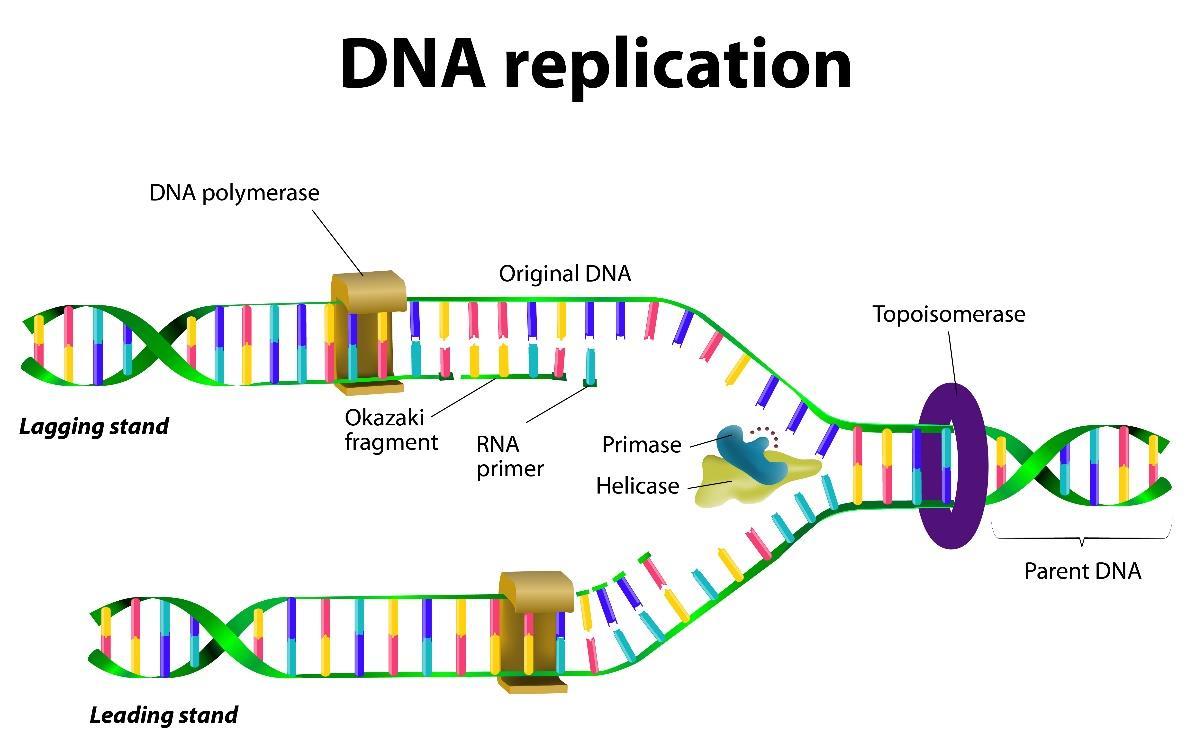
3 minute read
DNA -binding Proteins
bacteria, eDNA serves as a biofilm that covers the bacterium to protect it. It may act as a way for bacteria to recognize one another or may contribute to reducing stress on the bacterium. There is freelyfloating fetal DNA found in the circulation of a pregnant mother. This has clinical applications as it can be easily extracted from maternal blood and analyzed in order to find out if there are any genetic birth defects in the fetus.
There are several types of important DNA binding proteins held within the chromosome. They provide structure to the DNA and will help form the shape of the chromosomes. The main binding protein in chromosomes is a histone protein, although there are others. In prokaryotes, there are multiple types of binding proteins. In humans, histones form a disc-shaped structure called a nucleosome, which holds two complete turns of a double strand of DNA that are wrapped within it. There are ionic bonds that attach the histone proteins to the DNA strand. This means that they wrap around the DNA segment independent of the base pairs involved.
Advertisement
Chemical modifications can happen on histones that alter the strength of binding between the histone protein and the DNA molecule. Some modifications that can happen include phosphorylation, methylation, and acetylation. The modifications will make the DNA segment either more or less accessible to transcription factors on the DNA sequence. Some histone proteins will distort or bend the DNA segment so that it can fold better in the nucleus.
Protein A is another binding protein on DNA that helps the DNA replicate better. It assists in the replication process and helps the DNA helix separate, recombine, repair, and replicate. They help stabilize the DNA when it becomes single-stranded during the replication process so that it isn’t degraded or doesn’t form loops that would make replication difficult.
There are proteins called transcription factors that bind to specific parts of the DNA, such as the promotor regions, telling the messenger RNA where to start the transcribing process. They bind both to the DNA segment and to RNA polymerase, allowing the transcription process to happen. They can bind to enzymes that modify the histones at the promoter site so that the area of DNA can be opened up for transcription of the correct strand. They change the accessibility of the DNA template so that it is more accessible to the RNA polymerase molecule.
There are nucleases and ligases that act on DNA. Nucleases will cut the DNA strands by catalyzing the hydrolysis of the phosphodiester bond between DNA bases. Any nuclease that works at the ends of the DNA strand is called an exonuclease, while any nuclease that works within the middle of the strand is called an endonuclease. The most common endonucleases known are restriction endonucleases, which only cut the DNA at certain places. There are specific enzymes that recognize only certain base sequences, cutting the DNA segment when it recognizes the sequence. These enzymes are found in bacteria to prevent them from being acted
on by phages because they can digest the phage’s DNA before it can negatively impact the bacterial DNA.
Enzymes known as DNA ligases can reconnect broken DNA strands. They are important in DNA replication as they can reconnect short segments of DNA that are produced but are broken at the replication fork so that they allow for a completely unbroken strand of replicated DNA during the replication process. They are also used to reconnect DNA that has been recombined during the meiotic or mitotic process.
Topoisomerases are enzymes that act on DNA with both nuclease activity and ligase activity. These proteins will change the amount of supercoiling in DNA. Some of these enzymes work by cutting the helix, allowing a segment of DNA to rotate so it is less supercoiled. It then seals the break and takes the pressure off the DNA molecule. There are other topoisomerases that will add some bases to the strand before rejoining the pieces of the helix. They are necessary enzymes for both transcription and replication.
Helicases are a special type of enzyme that act as motors for DNA. They use ATP and other nucleoside triphosphates to break hydrogen bonds between the bases, unwinding DNA from the double-stranded form to the single-stranded form. They are really important to help enzymes get to the transcription sites for DNA to RNA transcription.
Figure 6 shows DNA replication and the activity of helicases:
Figure 6




